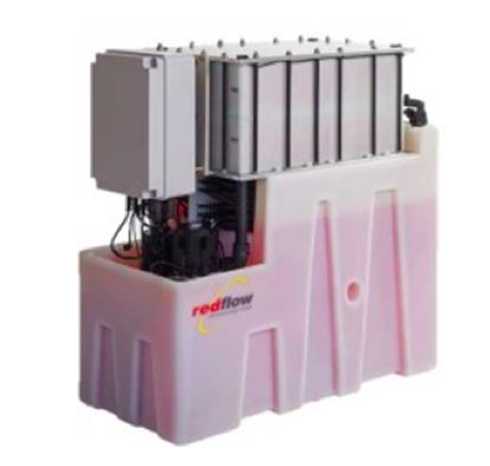ASX-listed battery storage company Redflow says its advanced flow batteries are already becoming cost-competitive with some of the market’s top lithium-ion and lead acid offerings, after the company cut the cost per kWh of its zinc bromine technology by over 50 per cent in 2015.
According to a product development update released by Redflow this week (and see the table below), the levelised, or lifetime cost of energy (LCOE) of its ZBM2 batteries is somewhere between 20-30c/kWh, putting it in the ballpark with current top of the range lithium-ion and lead acid battery technologies, including the Tesla Powerwall.

But the company notes that while lead acid and lithium have got to this place after decades of improvements, manufacturing optimisation and cost reductions, the Redflow battery is relatively new and thus has “substantial scope for further optimisation.”
On top of cutting technology costs, the company has also cut its manufacturing costs by 15 per cent over the course of 2015, and improved product performance, extending the batteries’ life cycle/longevity through a new electrode formulation.
The zinc bromine technology is also said to have other advantages over its more mainstream rivals, including a much reduced risk of thermal runaway and fire; the ability to operate over a wide temperature range with only ambient air cooling, and longer shelf life due to “deep cycling”.

Redflow – which last week announced plans to launch its residential battery offering in March – says global interest in home energy storage has “been ignited”, with Australia serving as “the key proving-ground for the battery industry.”
The company, which is initially targeting the commercial and grid-scale market, says there are already immediate commercial benefits for early adopters of its technology, particularly for use by Telcos or in off-grid and renewables integration applications.
It plans to begin targeting the residential market in Australia starting in March, and thereafter look to expand its residential offering globally.
Company chairman – and its largest stakeholder – Simon Hackett is overseeing this strategy in his executive role focusing on commercialisation and technology enhancement.
It is developing a “plug and play” model that will allow for simple use. Hackett this week suggested that homes with battery storage will be better placed to stay with the grid, although testing from a Redflow battery in November showed 74 per cent of household energy provided from solar, 24 per cent from Redflow batteries and 5 per cent from the grid.










